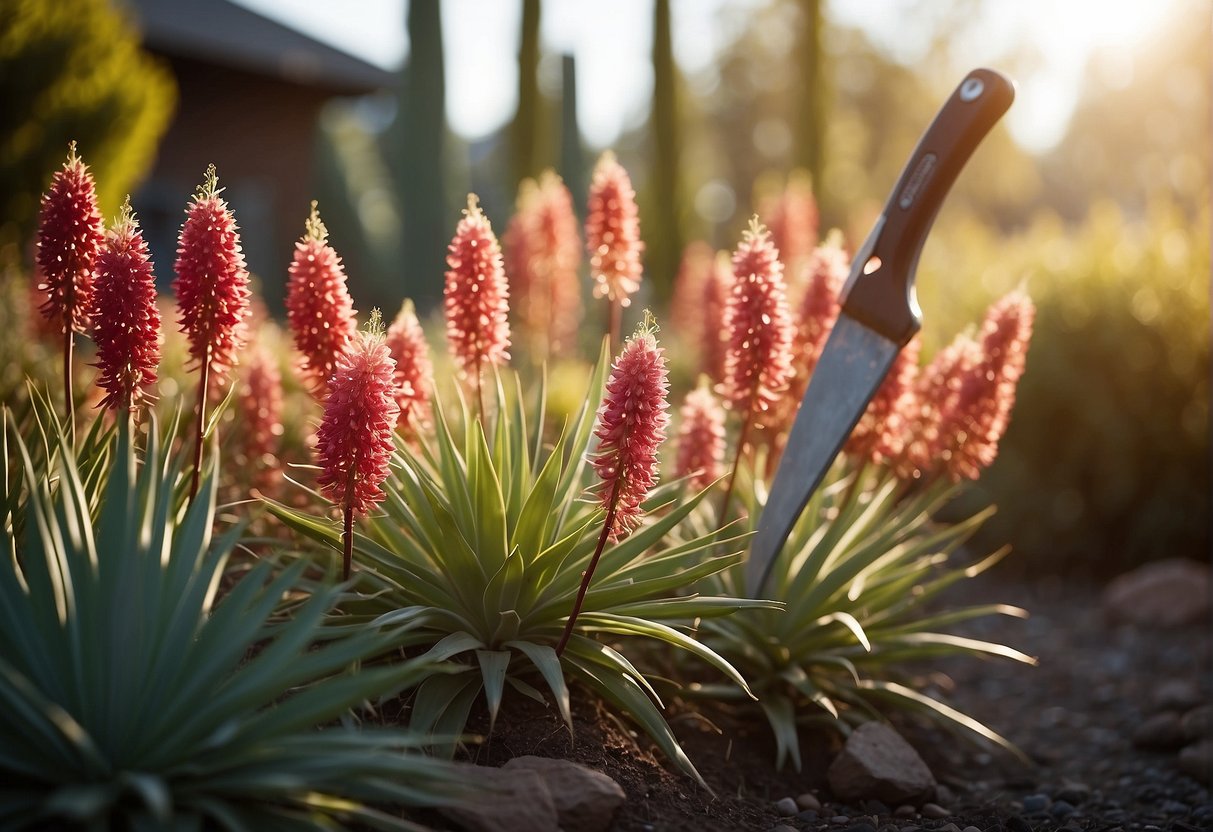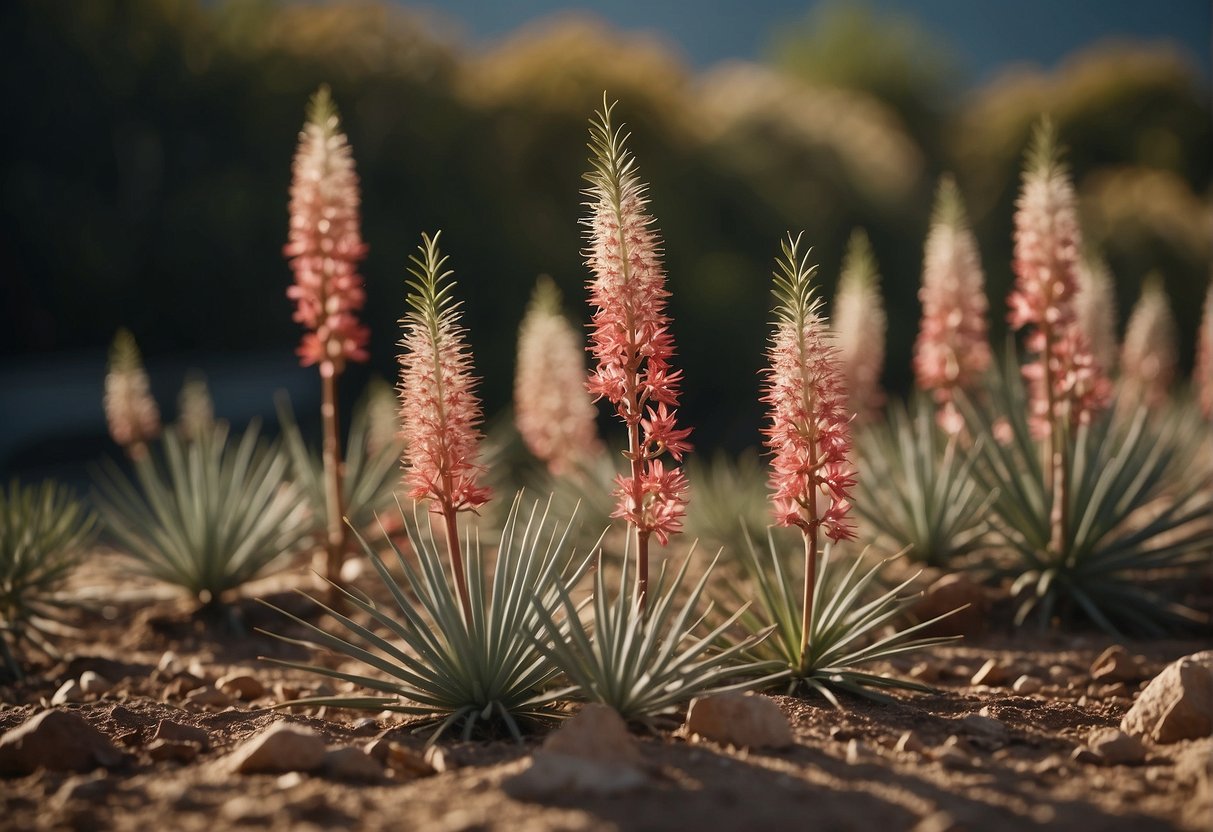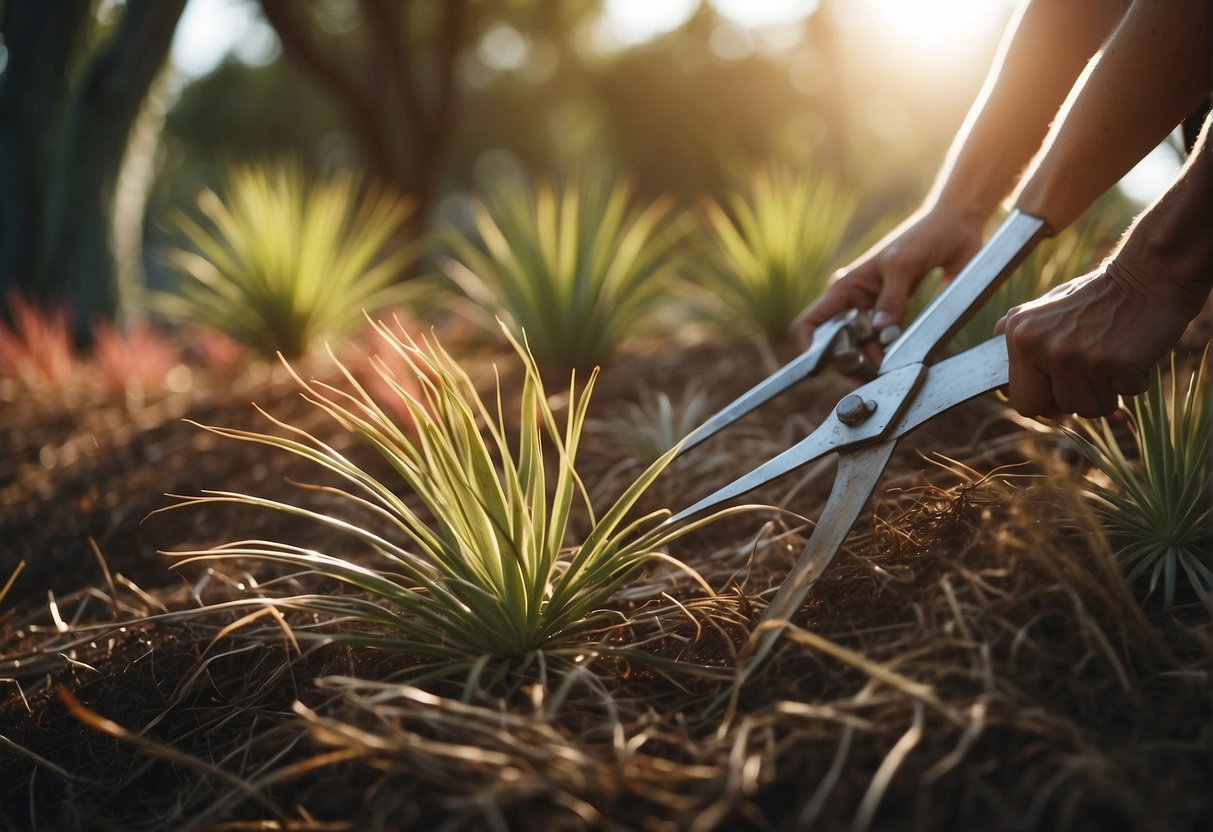Should you be in search of a plant that demands minimal upkeep while injecting vibrant hues into your surroundings, consider the red yucca (Hesperaloe parviflora) as an excellent choice. Nonetheless, even the most autonomous of plants occasionally require some attention, with one key aspect of caring for red yuccas being the process of thinning. By thinning out your red yucca plants, you encourage robust growth and help stave off prevalent problems such as fungal infections.

To start, it’s important to understand what thinning entails. Thinning is the process of removing some of the stems or leaves from your red yucca plant to allow more sunlight and airflow to reach the remaining foliage. This can help prevent issues like crown rot, which can occur if the plant becomes too dense and retains too much moisture. Thinning can also help promote new growth and encourage your plant to produce more flowers.
Thinning your red yucca plants may seem daunting at first, but with a little knowledge and the right tools, it’s a simple task that can help keep your plants healthy and vibrant. In this article, we’ll cover everything you need to know about thinning red yucca plants, from when to do it to how to do it safely and effectively.
Key Takeaways
- Thinning your red yucca plants can promote healthy growth and prevent common issues like fungal diseases.
- Thinning involves removing some of the stems or leaves to allow more sunlight and airflow to reach the remaining foliage.
- Thinning is a simple task that can be done safely and effectively with the right tools and knowledge.
Understanding Red Yucca Plant Care
Red Yucca plants are a popular choice for gardeners due to their low maintenance and attractive appearance. However, proper care is essential to ensure that they thrive in your garden. In this section, we will discuss the optimal growing conditions, pruning and maintenance, and propagation techniques for red yucca plants.
Optimal Growing Conditions
Red Yucca plants prefer full sun and well-draining soil. They can tolerate drought and high temperatures, making them an ideal choice for gardens in Texas, New Mexico, and Mexico. These plants bloom during the growing season, which is typically from early spring to late fall. To promote healthy growth and blooming, it is recommended to fertilize the plant once a month during the growing season.
Pruning and Maintenance
Red Yucca plants require minimal pruning and maintenance. To keep the plant healthy, it is recommended to remove any dead or damaged foliage using pruning shears. In the spring, you can also remove the flower stalk or spike after it has finished blooming. This will encourage the plant to produce new flower spikes.
Propagation Techniques
Red Yucca plants can be propagated through offsets, division, or pups. Offsets are new plants that grow from the base of the parent plant. To propagate using offsets, gently detach them from the parent plant and plant them in a potting soil mix. Division involves separating the parent plant into two or more sections and planting them separately. Pups are small shoots that grow from the base of the parent plant. To propagate using pups, gently detach them from the parent plant and plant them in a potting soil mix.
In conclusion, proper care is essential for red yucca plants to thrive in your garden. By providing optimal growing conditions, performing minimal pruning and maintenance, and using the right propagation techniques, you can enjoy the beauty of these plants for years to come.
Managing Common Issues

Red yucca plants are generally hardy and low maintenance, but like any plant, they can encounter issues that require attention. Here are some common issues you may encounter with your red yucca plant and how to manage them.
Preventing and Treating Diseases
Red yucca plants are susceptible to fungal diseases, such as root rot and leaf spot. To prevent these diseases, make sure your plant is in well-draining soil and avoid overwatering. If you notice any signs of disease, such as yellowing leaves, brown spots, or rot, remove the affected leaves or stems immediately and treat the plant with a fungicide. Be sure to follow the instructions on the fungicide carefully and wear gloves and safety glasses.
Addressing Environmental Stress
Red yucca plants can also experience stress from environmental factors such as temperature, overwatering, or damage to the leaves or stems. If you notice any brown tips or damage to the leaves or stems, assess the cause and take action to address it. For example, if the plant is in a container, make sure it has adequate drainage and is not sitting in water. If the plant is in a rocky or sandy area, consider adding more soil or mulch to help retain moisture. If the plant is a houseplant, make sure it is not in direct sunlight or near a heat source.
Aftercare is also important for managing environmental stress. Make sure to water your plant regularly, but not too much, and provide it with adequate sunlight and nutrients. If you notice any signs of infestation or pests, such as spider mites or aphids, treat the plant with an insecticide or remove the affected leaves or stems. Overall, keeping your red yucca plant healthy and well-cared for will help prevent and manage common issues.
Frequently Asked Questions

What is the proper technique for dividing red yucca plants?
Dividing red yucca plants is best done in the spring or fall. First, carefully dig up the entire plant and separate the individual rosettes from the main plant. Make sure each division has a healthy root system. Then, replant the divisions in well-draining soil and water thoroughly.
How can I manage the size of an overgrown red yucca?
If your red yucca has become too large, you can remove the outermost rosettes to reduce its size. Alternatively, you can dig up the entire plant and divide it into smaller sections to be replanted. Regular pruning of dead leaves and spent flower stalks can also help to manage the size of the plant.
What steps should be taken to maintain red yucca plants?
Red yucca plants require well-draining soil and full sun to thrive. They are drought-tolerant, but benefit from occasional deep watering during prolonged periods of dry weather. Regular fertilization with a balanced fertilizer can help to encourage healthy growth and blooming.
Why is my red yucca not producing blooms and how can I encourage it?
Red yucca plants typically bloom from late spring through fall. If your plant is not blooming, it may not be receiving enough sunlight or may be over-fertilized. To encourage blooming, make sure your plant is receiving at least six hours of direct sunlight per day and avoid over-fertilizing.
What are the water requirements for a healthy red yucca?
Red yucca plants are drought-tolerant and do not require frequent watering. However, they benefit from occasional deep watering during prolonged periods of dry weather. Water deeply once every two to three weeks during the growing season, and reduce watering in the winter.
How can I safely trim a tall yucca without damaging the plant?
To safely trim a tall yucca, use sharp, clean pruning shears or a saw to remove the top portion of the plant. Make the cut at a slight angle to prevent water from pooling on the cut surface. Avoid cutting too close to the base of the plant, as this can damage the roots and stunt growth.














